When Should I Dose Potassium in My Planted Aquarium?
Find out the best time to dose potassium in your planted aquarium. Learn deficiency signs, causes, and treatments to keep your aquatic plants thriving.
Table of Contents
- Why Should One Care About Potassium?
- Potassium Deficiency Symptoms in Aquatic Plants
- When to Dose Potassium
- How to Cure Potassium Deficiency
- Faq
- Conclusion
Potassium is considered a crucial nutrient for healthy plant growth in an aquarium. It does its magic by promoting photosynthesis and making the cells stronger while improving its general resistance. However, when to dose potassium in a planted aquarium? Let's dive into the best time and methods to keep it in balance.
Why Should One Care About Potassium?
Another important macronutrient that aquatic plants require for healthy growth is potassium. It helps develop roots, protects yellowing of leaves, and also assists in the uptake of other available nutrients. Its deficiency may cause weak stems, brown spots, and slowed growth.
Potassium Deficiency Symptoms in Aquatic Plants
Potassium deficiency may cause several problems in aquatic plants, such as:
· Yellowing Leaves (Chlorosis) Older leaves start turning yellow, while veins are greenish in color; hence the general look is poor.

· Brown Pinholes on Leaves Small brown or black holes that can be developed on the leaf. It develops to larger pinholes, decaying the leaf in time.
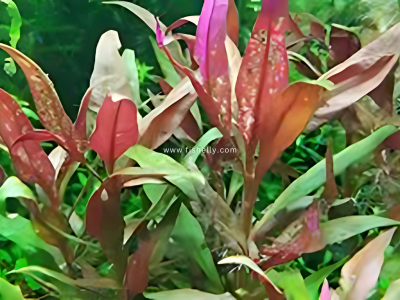
· Weak or Brittle Stems Low potassium concentration causes the weak stem, making it easy for breaking. Eventually, the shape and size get affected.

· Stunted Growth Without sufficient potassium, plants do not grow normally, and they have small, weak leaves with fewer new shoots.
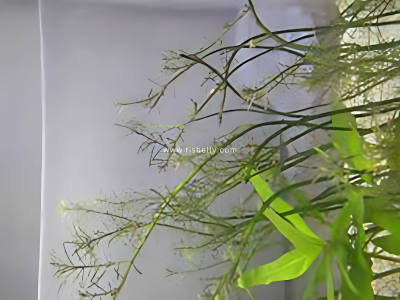
· Increased Algae Growth Plants that are deficient in potassium become weaker and allow algae to outcompete them for the available nutrients and light.
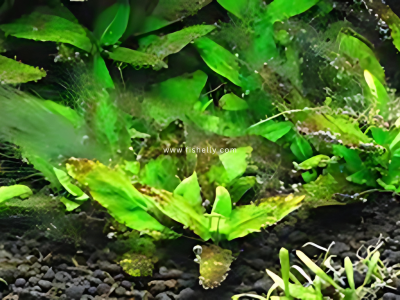
When to Dose Potassium
After a Water Change
Water changes can dilute important nutrients in the tank, and potassium is no exception. Dosing with potassium after a water change helps restore the balance of essential nutrients your plants need.
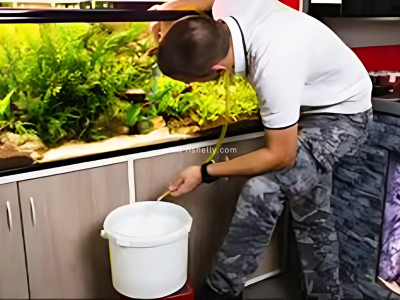
Deficiency Symptoms
When you notice yellowing leaves, brown pinholes, or slow growing, it is highly likely that it is due to a lack of potassium in the system. Regular dosing can help avoid all these problems.
As Part of a Regular Fertilization Schedule
Most aquarists dose potassium along with other fertilizers such as nitrogen and phosphorus. You can add it once or twice a week depending on the needs of plants.
In High-Light or CO₂-Injected Tanks
Fast-growing plants in high-tech setups use more nutrients. When you have bright lighting and CO₂ injection, dosing potassium more frequently keeps growth steady.
How to Cure Potassium Deficiency
If your aquatic plants show potassium deficiency, this is how to correct it:
Increase Potassium Dosing: Use a fertilizer that contains only potassium such as potassium sulfate (K₂SO₄) or an all-in-one aquarium fertilizer containing potassium.
Adjust dosing frequency: If you have already started dosing potassium and still observe the symptoms, you can increase the dosing to ensure that potassium is delivered regularly.
Check Water Parameters: Test for potassium levels using an aquarium test kit. Potassium levels should be ideal at 10–20 ppm.

Improve Plant Health: Provide proper lighting, CO₂ levels, and overall nutrient balance to promote plant growth and potassium uptake.

Trim Damaged: LeavesRemove leaves that are too damaged to recover. This will help plants focus on producing new, healthy growth.
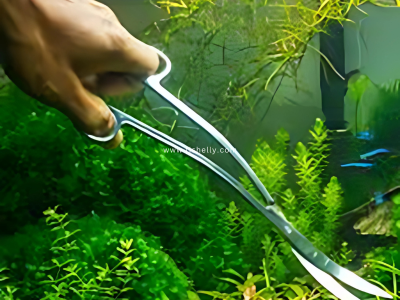
Faq
1.How often should I dose potassium?
1–2 times a week or more in high-tech tanks.
2.Can I overdose potassium?
Excessive potassium can imbalance nutrients, but it's generally safe within 10–20 ppm.
3.What are the signs of potassium deficiency?
Yellowing leaves, brown pinholes, weak stems, slow growth, and algae overgrowth.
4.When should I dose potassium?
After water changes, when deficiency symptoms appear, or as part of routine fertilization.
5.What potassium fertilizer should I use?
Potassium sulfate (K₂SO₄) or an all-in-one fertilizer.
6.Can I mix potassium with other fertilizers?
Yes, it's commonly used with nitrogen and phosphorus.
7.Do all planted tanks need potassium?
Yes, especially tanks with fast-growing plants or high light.
8.Does potassium reduce algae?
Yes, healthy plants outcompete algae when properly dosed.
9.How do I test potassium levels?
Use an aquarium test kit; ideal levels are 10–20 ppm.
10. What if my plants still show deficiency?
Increase dosing, check water parameters, ensure good lighting, CO₂, and nutrients. Trim damaged leaves.
Conclusion
Dosing potassium in a planted aquarium is very essential for vibrant plant growth. You can add it after water changes, when you see deficiency symptoms, or as part of a regular fertilization schedule. This will help you identify and treat potassium deficiency early, thus enabling your plants to thrive and not develop algae problems. Your plants will grow healthier and more beautiful with proper potassium levels.
Have questions? Drop a comment below! #fishelly_official Fish Community






